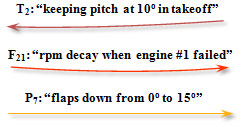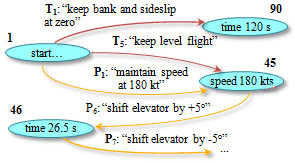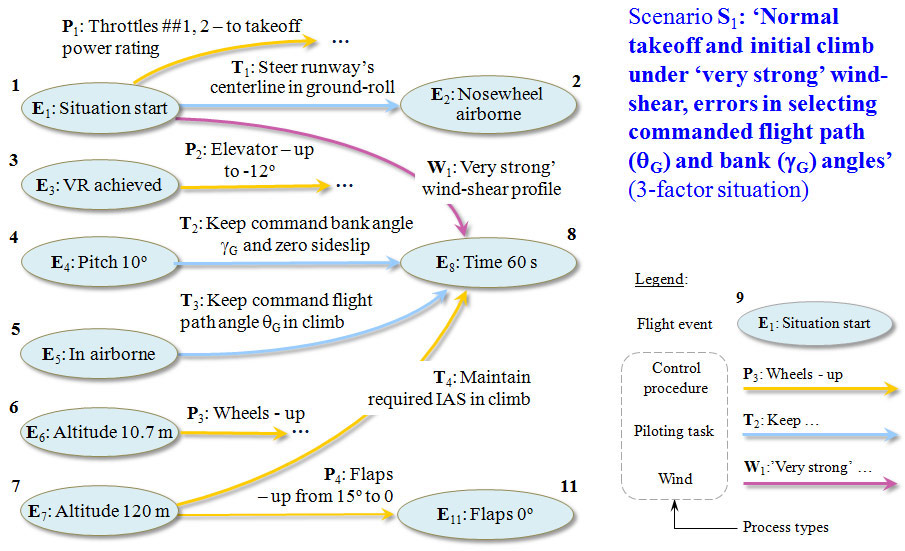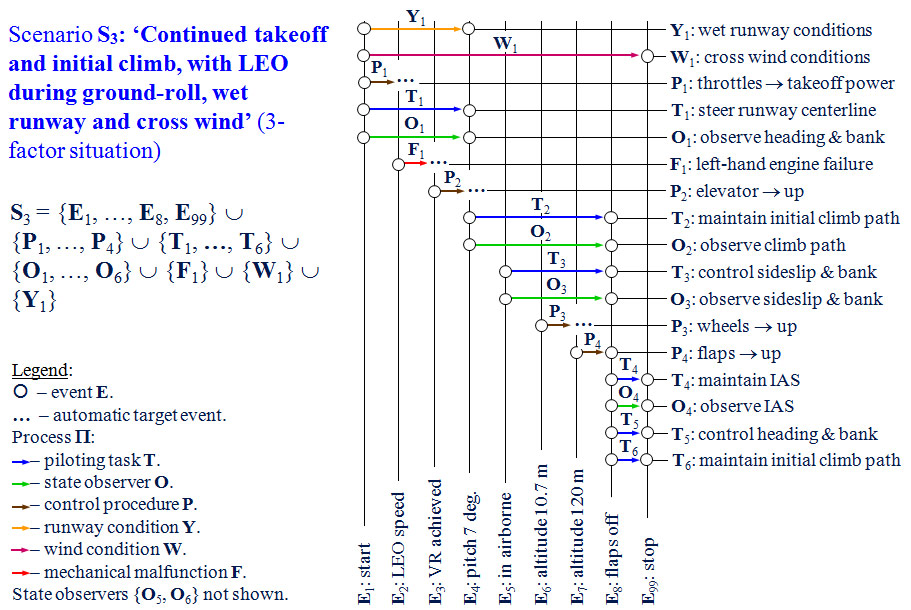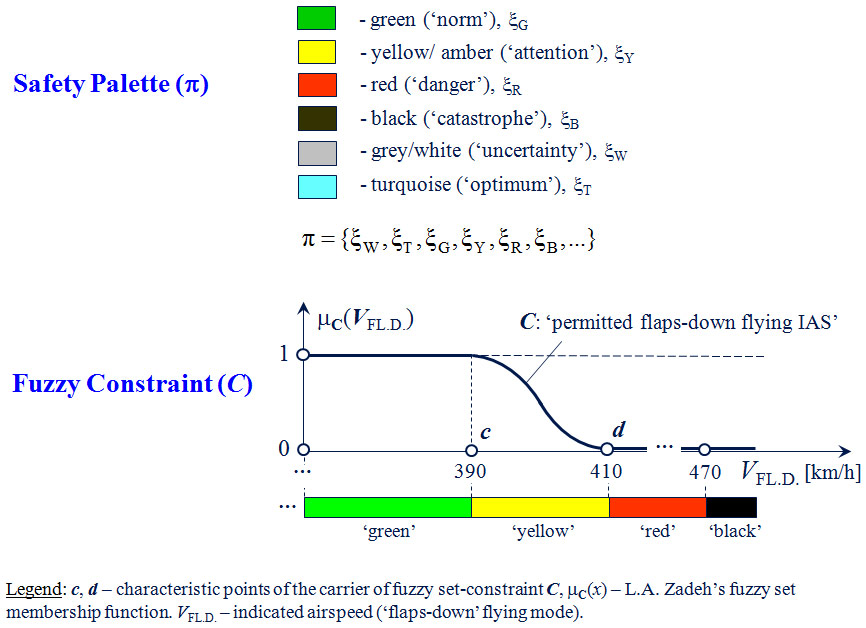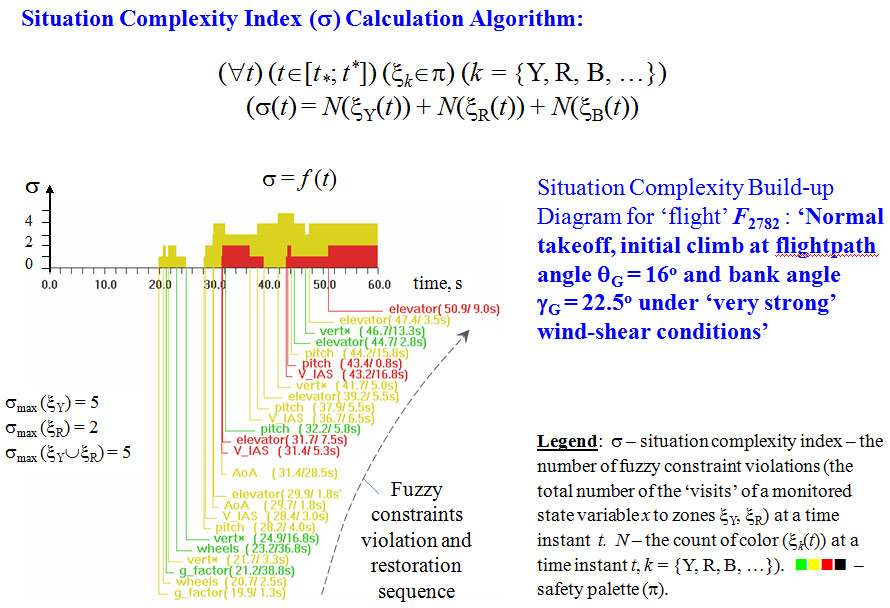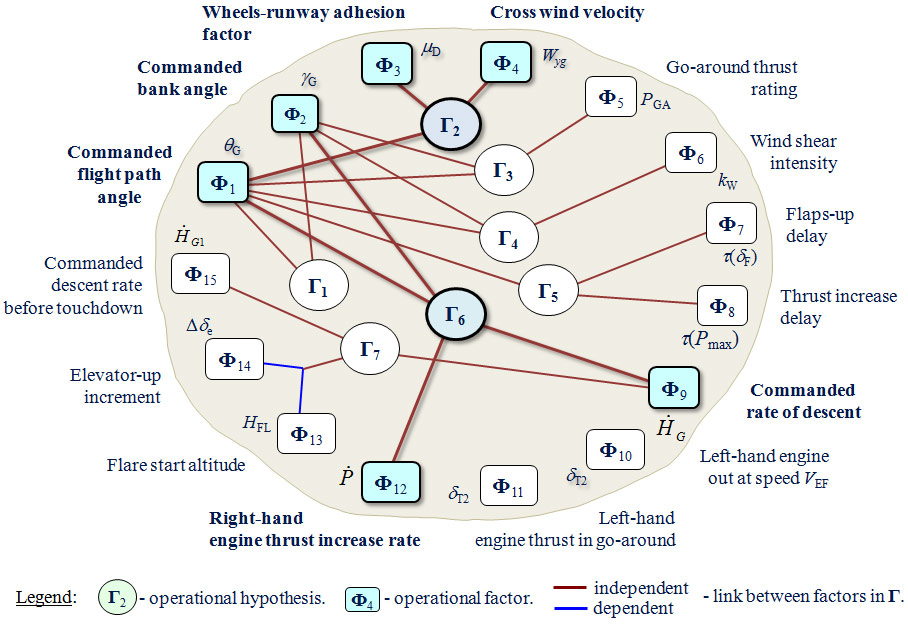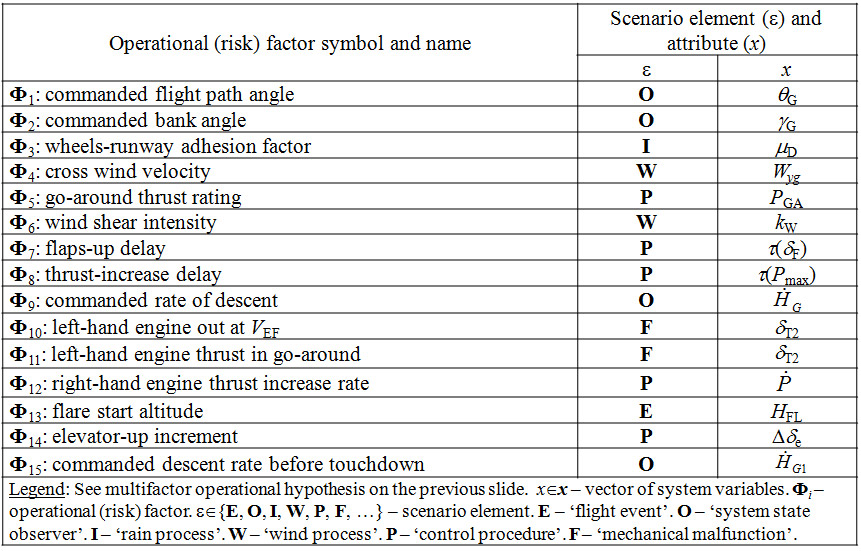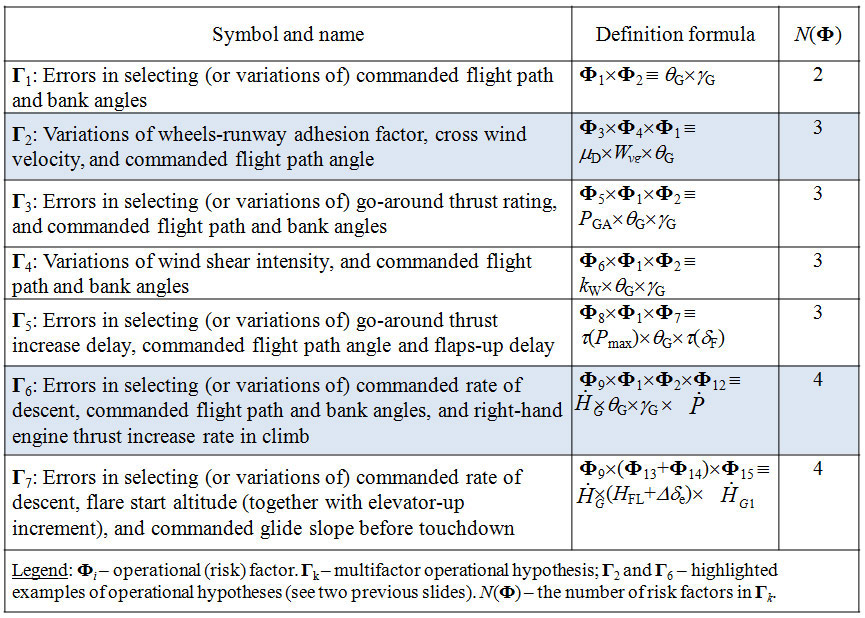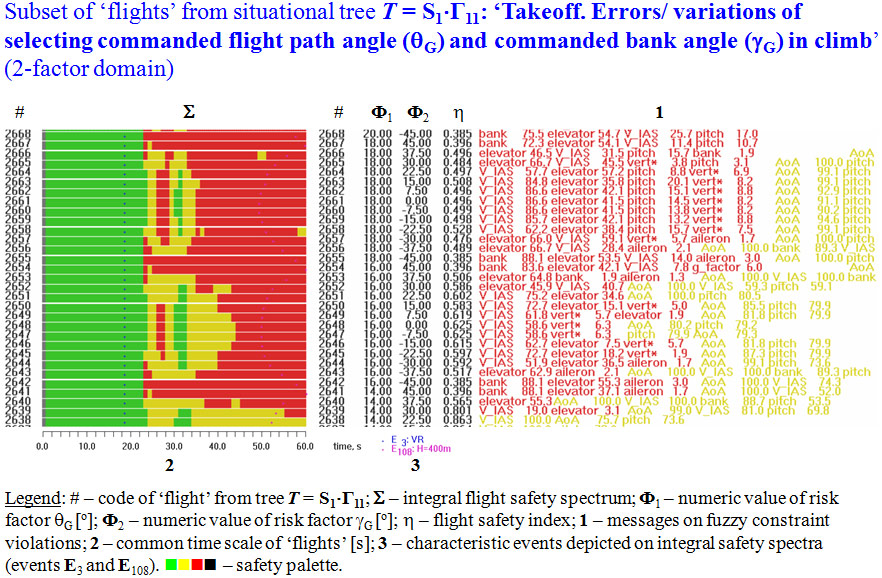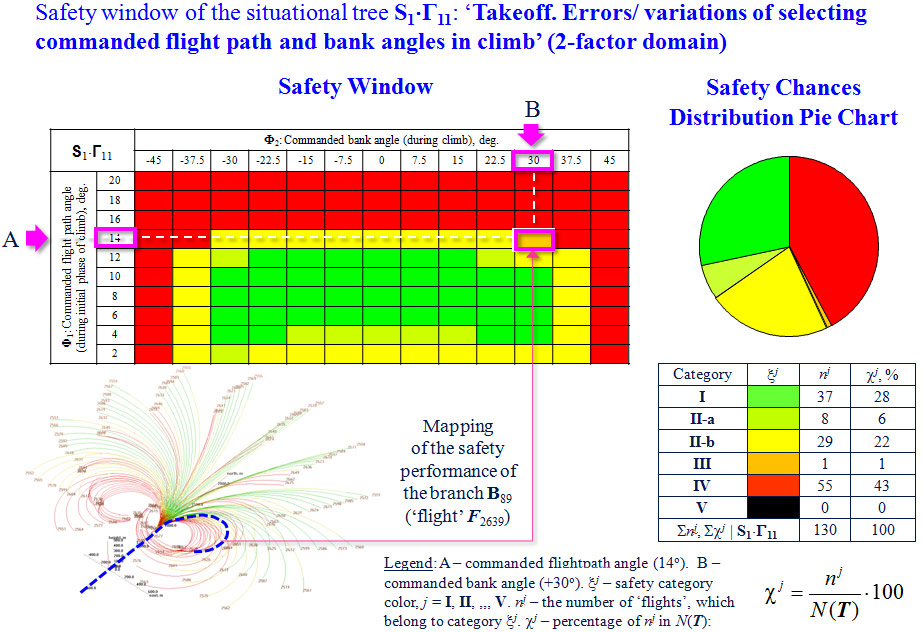ISAFE Methodology : Generalized Components
The Purpose
The purpose of the ISAFE methodology is to formalize a M&S and AI based approach to proactive accident risk analysis and prevention – during aircraft lifecycle, from design to operation:
In this approach, the ‘pilot/ automaton – aircraft – operating environment’ system dynamics model is employed as a ‘generator’ of missing statistics on flight accidents/ incidents in multifactor or unknown situations.
The model is implemented as a ‘single-platform’ software solution – VATES technology.
ISAFE Methodology Concept Origination and Similar Concept
Onboard Implementation: Chronology
Two-Level Knowledge Model of a Multifactor Flight Domain
Flight Situation Scripting Language – Discrete-Continuous Formalism : Definition of Key Concepts
Flight event (E)The flight event is a special state of the system which is important to the pilot/designer in terms of flight control ‘switching’ logic and stands for a substantial change in the flight situation. Examples: – “left engine out” |
Flight process (П)The flight process is a time-history of one or several flight parameters which characterize a continuous aspect of the ‘pilot (automaton) – aircraft – operating environment’ system behavior (dynamics, control, weather, etc.). Examples: – “steer runway’s centerline” |
Flight scenario (S)The flight situation scenario is a concise plan of a flight situation. It specifies the content and the logic of flight in this situation. A flight scenario is depicted as a directed graph or a matrix. Examples: – “normal takeoff” |
| NB: Flight situations of any complexity for any aircraft and any phase of flight can be described using events and processes (since 1977). | ||
Graphic Representation of Complex Flight Situation Scenario –Directed Graph Format
Graphic Representation of Complex Flight Situation Scenario –Matrix Format
Safety Palette. Fuzzy Constraint
Partial Safety Spectra. Integral Safety Spectrum
Situation Complexity Build-up Diagram
Design Field of Multifactor Operational Hypotheses
Operational (Risk) Factors for Testing
Multifactor Operational Hypotheses
Situational Tree of Flight. Virtual Flight Test Time
Integral Safety Spectra. Examined Operational (Risk) Factors.
Flight Safety Indices. Fuzzy Constraints Violation Statistics
Flight Situation Safety Classification Categories
|
Color |
Code |
Name |
Definition |
|
Green |
I |
Safe |
The system state resides mainly inside the ‘green’ zone. As a maximum, the system state may stay, for a short period of time, in close proximity to the operational constraints, i.e. inside the ‘yellow’ zone, but must leave it by the end of the situation. |
|
Salad |
II-A |
Conditionally Safe – a |
As a maximum, the system state may stay temporarily, or for a medium period of time, in close proximity to the operational constraints, i.e. inside the ‘yellow’ zone. |
|
Yellow |
II-B |
Conditionally Safe – b |
As a maximum, the system state may stay for a long period of time in close proximity to the operational constraints, i.e. inside the ‘yellow’ zone. |
|
Orange |
III |
Potentially Unsafe |
As a maximum, the system state may violate operational constraints, i.e. enter the ‘red’ zone, for a short or between short and medium period of time, but must leave it by the end of the situation. |
|
Red |
IV |
Dangerous (Prohibited) |
As a maximum, the system state may stay beyond the operational constraints, i.e. inside the ‘red’ zone, for a medium or long period of time or till the end of the situation. |
|
Black |
V |
Catastrophic (‘Chain Reaction’) |
There is at least one (i.e. for a very short time) occurrence of the violation of any operational constraint on the ‘black’ level. |
Safety Window. Safety Chances Distribution Pie Chart
Flight Safety ‘Topology’
| << Previous page | Next page >> |






